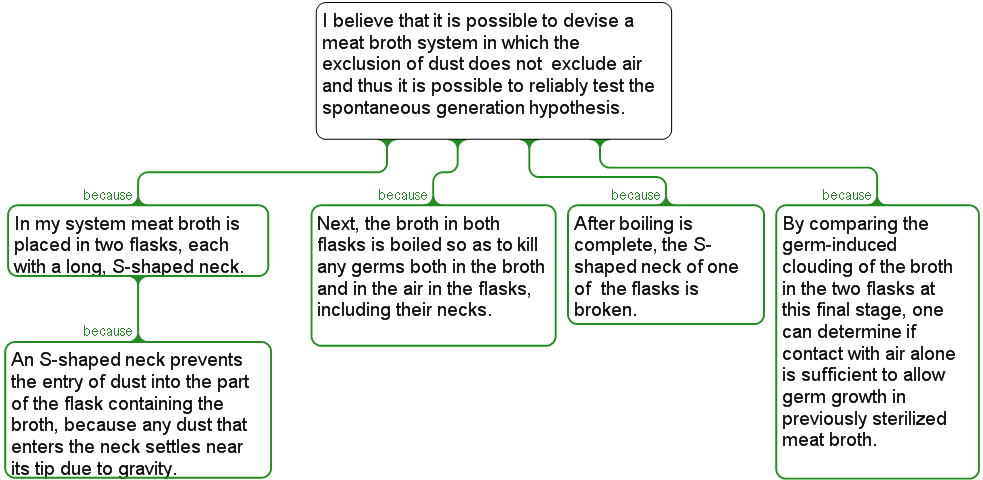The Science Of Scientific Writing Set B Paragraphs: Intro to Readers' Expectations The Landmark What makes a landmark? Exercise 1 Quiz Landmark should appear early Exercise 2 A kick in the tail A plan for writing landmark-final paras Exercise 3 Exercise 4 Exercise 5 Exercise 6 Final Page.
OVERVIEW: The way to well-written science
PART I: Paragraphs and Sentences
SET A: Paragraphs: The Maps Behind Them
SET B: Paragraphs: Using Maps to Meet Readers' Expectations
SET C: Paragraph Coherence and Cohesion
SET D: Sentences
SET E: Scientific Sections (including Methods)
SET F: Scientific Sections: The Discussion
SET G : Scientific Sections: The Introduction
SET H : The Paper as a Whole
*Exercise 4*

In Exercise 2 you will convert a normal argument map into the landmark-final format, following the same 3 steps described on this page.
- Start with a map in normal argument format (supplied below).
- Shift the text of the top box to a new red claim box at the bottom of the map leaving the top box blank.
- Fill in the blank box with a pointer sentence that provides a question for which old top-box statement is the answer
- Finally, write it up as a landmark-final paragraph
Drag it to the Rationale workspace and convert it to a landmark-final map as instructed above. For the dragging to work, you must be viewing this page using Rationale's inline browser.
Then use the map as the basis for a landmark-finall paragraph. After you have copied the sentences from the map boxes, make sure to edit the text so that it reads smoothly.
The argument presents the core evidence that allowed Louis Pasteur to dismiss previously claimed cases of spontaneous generation.
No Model Answer is supplied. Feedback will be provided by your instructor (if available).
......
